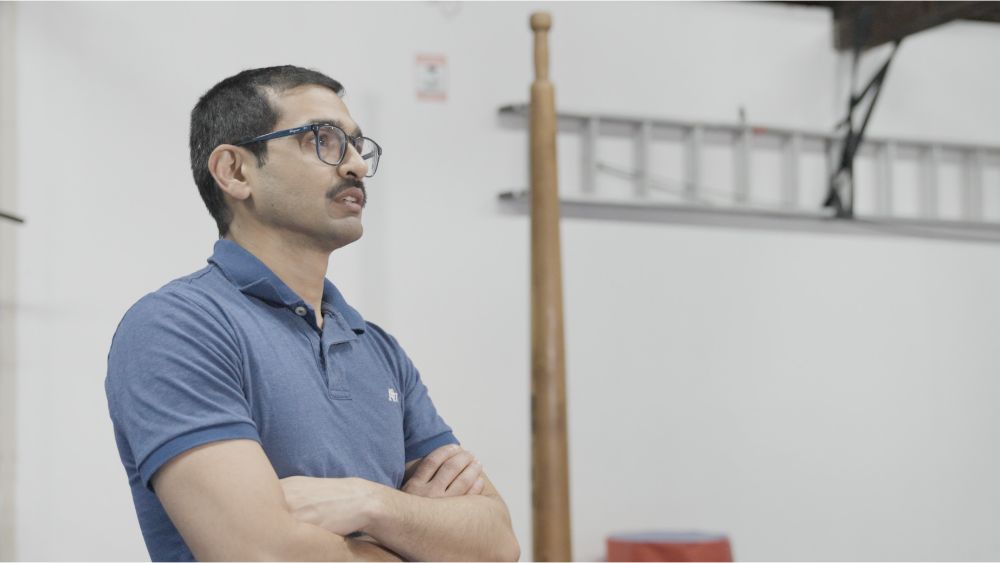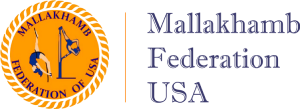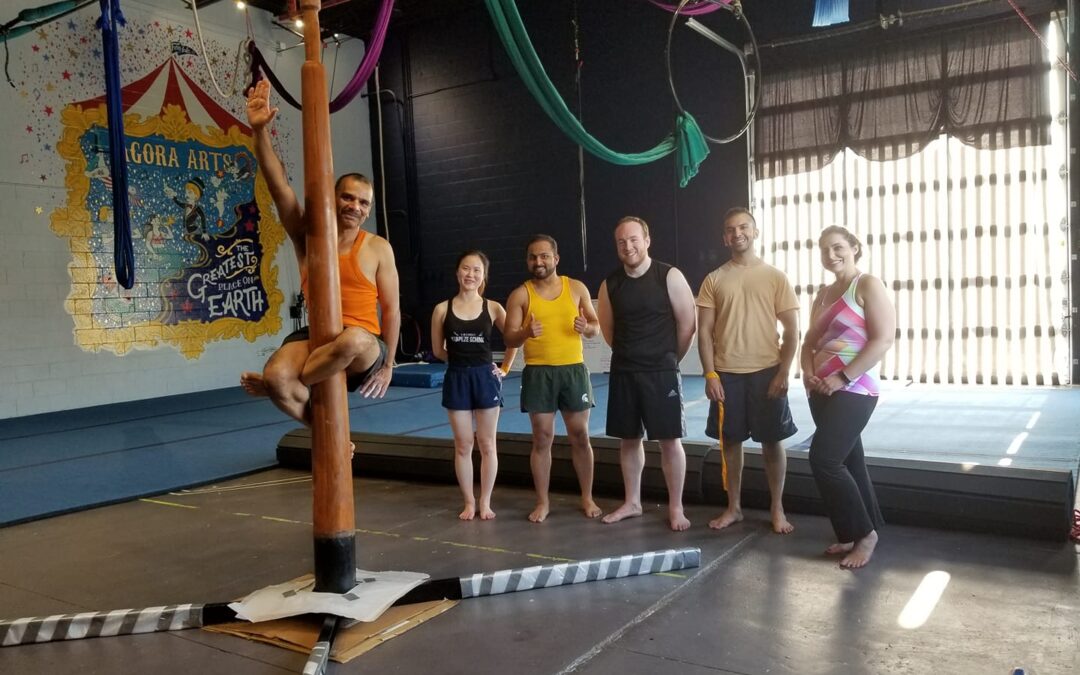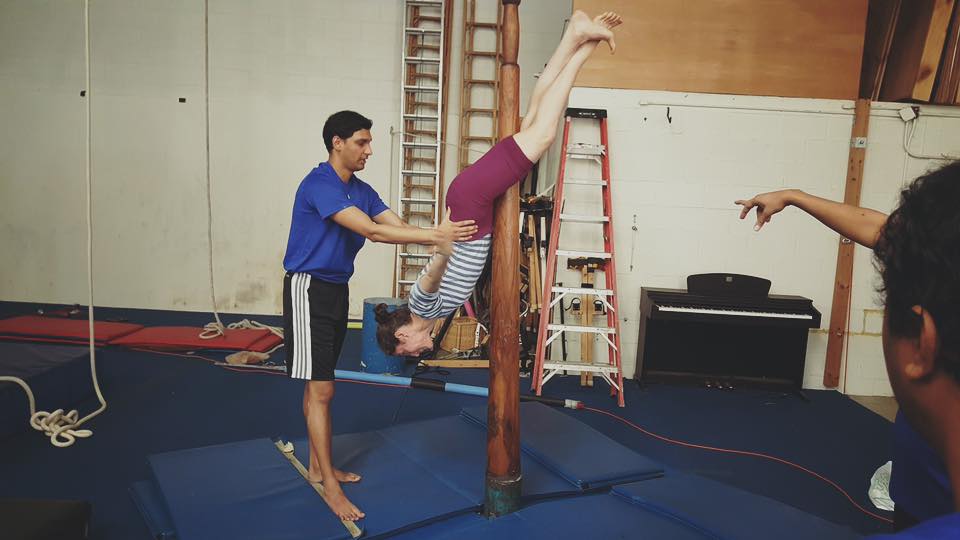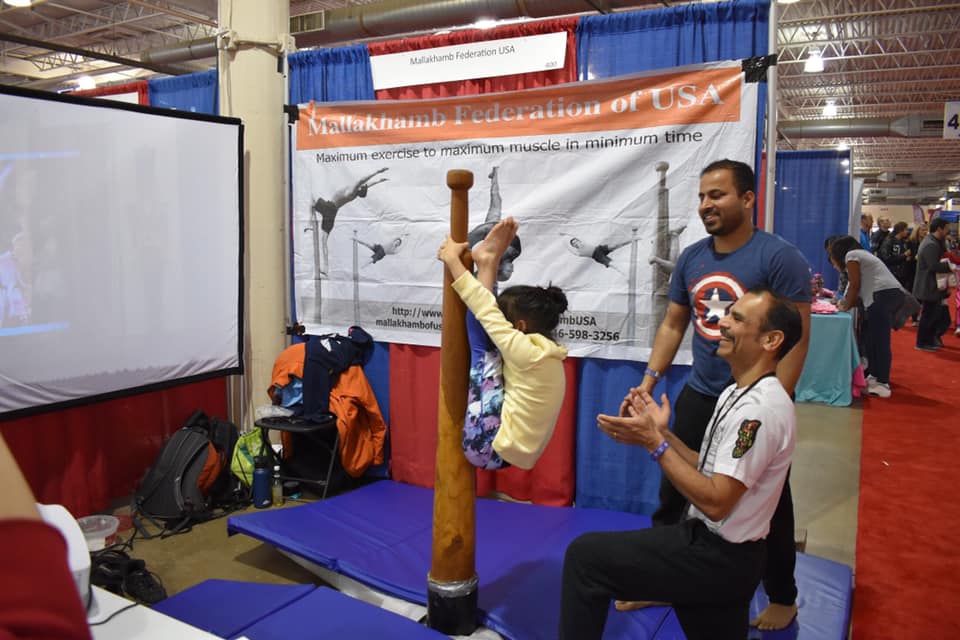
Why You Should Do Mallakhamb for Calisthenics
Mallakhamb is a sport where ancient tradition meets modern fitness, creating a unique and captivating form of exercise. In comparison, Calisthenics represents a more recent art that places a significant emphasis on bodyweight exercises for building strength and agility. Together, these disciplines form a harmonious blend of the ancient and the modern, providing practitioners with a diverse and enriching fitness experience.
In this article, we’ll explore the roots of Mallakhamb, its evolution, and how it seamlessly integrates with Calisthenics, providing a fresh perspective on strength and flexibility training.
Key Takeaways
- Mallakhamb seamlessly integrates with Calisthenics, offering a holistic approach to fitness. From building upper body strength to enhancing mental toughness, this ancient art form provides a comprehensive workout experience.
- Mallakhamb introduces a variety of Mallakhamb Exercises For Calisthenics, including pole climbing, rope techniques, and hanging exercises. Each movement targets specific muscle groups, contributing to improved strength, flexibility, and overall fitness.
- Beyond physical gains, Mallakhamb for Calisthenics cultivates mental toughness and heightened focus. The concentration required for intricate poses and dynamic maneuvers becomes a gateway to developing a resilient mindset that extends beyond the training mat.
- Approach Mallakhamb with a methodical progression mindset, gradually advancing from beginner to advanced levels. Prioritize safety by following expert tips, including proper warm-up, equipment inspection, and seeking professional guidance for a secure training experience.
- Mallakhamb’s rich history and traditional roots merge seamlessly with modern Calisthenics, creating a unique synergy. Embrace the timeless wisdom of Mallakhamb for Calisthenics to add depth and diversity to your fitness routine, unlocking a journey that enriches both body and mind.
Brief History and Origins of Mallakhamb
Mallakhamb has its roots deeply rooted in the rich heritage of the Indian subcontinent. Originally developed as a traditional exercise for wrestlers, it served as a means to enhance their strength, agility, and overall physical prowess. It was an era where wrestlers, striving for excellence in their craft, practiced Mallakhamb to gain a competitive edge.
As time unfolded, Mallakhamb evolved beyond its wrestling-centric origins. It underwent a transformation, integrating elements of gymnastics and aerial yoga, creating a dynamic and visually stunning sport.
This evolution expanded Mallakhamb’s horizons, turning it into a mesmerizing performance art that not only showcased physical strength but also embraced the fluidity and grace of aerial movements.
How Mallakhamb Works: Gymnasts, Yoga, and the Stationary Vertical Pole
Mallakhamb is a performance where gymnasts, also known as Mallakhambis, engage in a fascinating performance of yoga and gymnastic poses in the air. What makes this art unique is its use of a stationary vertical pole, a central element that acts as both a partner and a prop. Gymnasts are usually seen climbing, twisting, and suspending themselves in mid-air, using wrestling grips to create a seamless dance between their bodies and the pole.
The wrestling grips, traditionally designed for combat, are repurposed in Mallakhamb to execute intricate postures. This fusion of strength, flexibility, and balance makes Mallakhamb a truly holistic form of exercise. It’s not just a sport; it’s an art blending human physicality and creativity.
Understanding What is Calisthenics and Its Benefits
Calisthenics, derived from the ancient Greek words “kallos” (beauty) and “sthenos” (strength), is a form of exercise that utilizes one’s body weight for resistance. Unlike traditional weightlifting, Calisthenics emphasizes movements that enhance strength, flexibility, and overall physical fitness without the need for external equipment.
Key Elements of Calisthenics
Bodyweight Exercises
Calisthenics relies on bodyweight exercises, including push-ups, pull-ups, squats, and dips. These Mallakhamb for Calisthenics exercises engage multiple muscle groups, promoting functional strength and endurance.
Functional Movements
The movements in Calisthenics mimic real-life activities, enhancing not only muscle strength but also agility and coordination. This focus on functional movements contributes to a well-rounded and practical approach to fitness.
Progressive Overload
Central to Calisthenics is the concept of progressive overload. As individuals build strength and proficiency, they progress to more challenging variations of exercises, ensuring a continuous challenge for the muscles.
Minimal Equipment
While some Calisthenics enthusiasts incorporate equipment like pull-up bars or parallel bars, the discipline is known for its minimalistic approach. Many exercises can be performed using nothing more than one’s body and a flat surface.
Adaptability
Calisthenics routines are adaptable to various fitness levels, making them accessible for beginners while providing a platform for advanced practitioners to continually push their limits.
Aesthetic Component
Beyond strength, Calisthenics often incorporates an aesthetic element, with practitioners mastering skills like handstands, levers, and planches, showcasing the combination of strength and artistry.
Benefits of Calisthenics for Overall Health
Improved Strength
Calisthenics builds functional strength by targeting major muscle groups through bodyweight exercises.
Enhanced Flexibility
The dynamic movements in Calisthenics contribute to improved flexibility and joint mobility.
Increased Endurance
Regular Calisthenics training enhances cardiovascular endurance, crucial for overall fitness.
Minimal Barriers to Entry
With minimal equipment requirements, Calisthenics is accessible to a broad range of individuals.
Versatility
Calisthenics offers a versatile and customizable approach to fitness, allowing individuals to tailor their routines to their specific goals.
Why Mallakhamb for Calisthenics?
Now, you might be wondering, why consider Mallakhamb for your Calisthenics routine? The answer lies in its versatility. The stationary pole becomes a dynamic tool, challenging your muscles in ways traditional Calisthenics might not. Mallakhamb for Calisthenics can unlock new dimensions of strength and flexibility, adding a fresh and exciting layer to your fitness journey.
Benefits of Mallakhamb for Calisthenics
Incorporating Mallakhamb for Calisthenics routine goes beyond just adding variety; it’s a game-changer for your overall fitness. Let’s break down how Mallakhamb for Calisthenics can significantly enhance your physical and mental well-being.
Improved Strength, Flexibility, Balance, and Coordination
Enhancing Overall Physical Fitness
Mallakhamb acts as a versatile tool that targets various aspects of physical fitness. It’s not just about building muscle; it’s about fostering a well-rounded strength that extends to flexibility, balance, and coordination. Unlike conventional exercises, Mallakhamb engages muscles in unique ways, promoting a comprehensive enhancement of your overall physical capabilities.
Focus on Development
Through regular Mallakhamb practice, you’ll find a noticeable improvement in strength, as your body learns to navigate gravity and resistance in unconventional ways. Flexibility becomes a natural byproduct, with the dynamic movements required in Mallakhamb enhancing your body’s range of motion. The constant challenge of balancing on the pole refines your stability and coordination, contributing to a more agile and responsive physique.
Calisthenics-Specific Mallakhamb Benefits
When we bridge Mallakhamb with Calisthenics, the synergy is evident. Mallakhamb exercises complement traditional Calisthenics by offering a unique dimension to bodyweight training. It introduces unconventional movements that engage different muscle groups, providing a holistic approach to strength development. Whether you’re a beginner or a seasoned Calisthenics enthusiast, Mallakhamb can inject freshness into your routine, pushing your physical boundaries.
Mental Toughness and Focus
Contributing to Mental Toughness
Beyond the physical gains, Mallakhamb is a crucible for mental toughness. The concentration required to execute intricate poses and maneuvers challenges your mind, fostering resilience and mental fortitude. As you progress in Mallakhamb, overcoming the mental hurdles becomes as crucial as conquering physical obstacles, creating a robust mindset that extends beyond the practice arena.
Exploring the Mental Aspects of Calisthenics
Integrating Mallakhamb into your Calisthenics training brings a unique mental dimension. The focus required to balance on the pole seamlessly translates into heightened concentration during your Calisthenics routine. Your mental agility is put to the test as you navigate through challenging positions, strengthening not just your muscles but also your ability to stay focused under pressure.
Mallakhamb for Calisthenics is a holistic journey. It’s not just about transforming your body; it’s about refining your mind, creating a symbiotic relationship between physical prowess and mental resilience. As we delve deeper into Mallakhamb techniques for Calisthenics, you’ll discover how this ancient art form can be a transformative force in your pursuit of fitness excellence.
Mallakhamb Techniques for Calisthenics
Mallakhamb techniques for Calisthenics are time-honored practices that meet the modern realm of Calisthenics, creating a fusion that enhances not only strength but the essence of your entire fitness journey.
Pole Climbing for Upper Body Strength
Effective Upper Body Strength Development
Pole climbing in Mallakhamb is a powerhouse for building upper body strength. As you ascend the pole, your arms, shoulders, and back are dynamically engaged, intensifying the resistance and creating a robust workout for your upper body.
The wrestling grips, integral to Mallakhamb, amplify the challenge, sculpting your muscles as you navigate upward. The result? A well-defined and resilient upper body that forms a solid foundation for advanced Calisthenics movements.
Integration into Calisthenics Routine
The beauty of Mallakhamb’s pole climbing lies in its seamless integration with Calisthenics. The climbing motions mimic the pull-ups and muscle-ups typical in Calisthenics training. By incorporating Mallakhamb pole climbing techniques for Calisthenics into your routine, you not only diversify your exercises but also enhance the effectiveness of familiar Calisthenics movements. The pole becomes your vertical training ground, offering a fresh perspective on upper body strength development.
Rope Climbing for Core Stability
Core Stability Mallakhamb Benefits
Mallakhamb’s rope climbing techniques aren’t just about ascending; they’re a masterclass in core stability. The act of pulling yourself up requires a symphony of abdominal and back muscles, turning each climb into an intense core workout. The controlled movements on the rope demand not only strength but also precision, engaging your core in a way that traditional exercises might overlook.
Integration into Calisthenics Routine Bringing
Mallakhamb’s rope climbing into your Calisthenics routine adds a crucial layer to your core training. The stability gained from navigating the rope translates into enhanced control during Calisthenics exercises like planks and leg raises. The rope becomes a dynamic tool, challenging your core from various angles and transforming your abdominal strength into a solid foundation for overall fitness.
Hanging Exercises for Overall Fitness
Impact on Overall Fitness
Mallakhamb’s hanging exercises redefine the concept of a full-body workout. Hanging from the pole engages not only your upper body but also your lower body muscles. The sustained grip required during hanging activates your forearms, enhancing grip strength. Simultaneously, the engagement of your core and leg muscles transforms hanging into a comprehensive exercise that targets multiple muscle groups.
Complementing and Enhancing Calisthenics Incorporating
Mallakhamb’s hanging exercises seamlessly complements and enhances your Calisthenics workout. The sustained hangs build endurance, a crucial component for mastering various Calisthenics movements. The dynamic nature of hanging exercises also improves shoulder stability, benefiting exercises like handstands and planches. Mallakhamb hanging exercises, when integrated into your routine, offer a well-rounded approach to overall fitness.
Training for Mallakhamb for Calisthenics
Embarking on Mallakhamb training for Calisthenics opens the door to a disciplined journey where progress is not just measured in physical gains but in the mastery of an ancient art. Let’s unravel the key aspects of training, from beginners stepping onto the mat to seasoned practitioners aiming for advanced feats.
Progression from Beginner to Advanced Levels
Structured Progression of Mallakhamb Training
Mallakhamb training is a journey that evolves, much like the strength it builds. Beginners often start with foundational exercises, gradually acquainting themselves with the pole and basic poses. As proficiency grows, the training advances to include more intricate maneuvers and challenging poses. The progression is structured to ensure a gradual development of strength, flexibility, and coordination.
Guidance for Beginners
For those new to Mallakhamb and Calisthenics, the initial focus is on building a strong foundation. Beginners are introduced to basic pole climbing techniques, emphasizing proper form and grip. The training gradually incorporates aerial yoga postures, allowing practitioners to acclimate to the dynamic nature of Mallakhamb. Starting with manageable exercises helps build confidence and lays the groundwork for more complex movements in the future.
Advancing Gradually
As practitioners gain confidence and strength, the training naturally progresses to more advanced levels. This might involve mastering challenging poses, refining transitions between postures, and exploring variations of Mallakhamb techniques. The gradual advancement ensures a sustainable journey, preventing overexertion and promoting a deeper understanding of the art.
Importance of Proper Form and Technique
Preventing Injuries through Proper Form
In Mallakhamb, proper form is not just a guideline; it’s a safeguard against injuries. Emphasizing correct body alignment and technique during exercises significantly reduces the risk of strains or accidents. Whether it’s climbing the pole or executing intricate postures, maintaining proper form is paramount for a safe and effective training experience.
Enhancing Effectiveness with Form Focus
Beyond injury prevention, focusing on form improves the effectiveness of Why Mallakhamb for Calisthenics is essential. Each movement is designed to engage specific muscle groups, and precision in execution ensures targeted development. Proper form optimizes the benefits of Mallakhamb, whether it’s building upper body strength, improving flexibility, or honing coordination skills – every aspect contributes to a more effective Calisthenics routine.
As you step into the world of Mallakhamb training for Calisthenics, remember that patience and consistency are your allies. The journey from a beginner to an advanced practitioner is a marathon, not a sprint. With a structured approach, a keen focus on form, and a commitment to progression, Mallakhamb becomes not just a physical exercise but a transformative practice that shapes both body and mind.
Essential Equipment for Mallakhamb Calisthenics
Mallakhamb Pole
The cornerstone of Mallakhamb training is the vertical pole, typically made of wood or metal. Understanding the nuances of pole selection, its height, and thickness can significantly impact the intensity and variety of exercises. Exploring how practitioners can choose or set up a suitable pole at home can be valuable for those considering Mallakhamb incorporation into their Calisthenics routine.
Ropes and Accessories
For rope climbing exercises in Mallakhamb, the quality and type of ropes are crucial. Different thicknesses and materials offer varying levels of grip and challenge. Discussing the importance of securing the rope properly and the potential variations in rope climbing techniques can provide practical insights for readers.
Safety Mats
Given the dynamic and sometimes aerial nature of Mallakhamb exercises, safety is paramount. Incorporating safety mats beneath the Mallakhamb training area can prevent injuries and instill confidence in practitioners. Guidance on choosing the right mats and ensuring a safe training environment can be included to promote responsible practice.
Grips and Padding
Wrestling grips are integral to Mallakhamb, and having the right type of grip enhances both safety and performance. Discussing the importance of proper hand protection and any additional padding used in Mallakhamb can help readers understand the significance of these accessories.
Additional Calisthenics Equipment
Highlighting the adaptability of Mallakhamb in integrating with common Calisthenics equipment like pull-up bars, parallel bars, or rings can open up new possibilities for readers. This section can explore how practitioners can combine traditional Mallakhamb techniques with these familiar tools for a comprehensive workout.
Incorporating Expert Safety Measures in Your Mallakhamb for Calisthenics Journey
Prioritizing Warm-Up and Cool Down
Mallakhamb should be initiated for a Calisthenics session with a meticulous warm-up routine. Dynamic stretches are crucial to prepare your muscles for the demanding movements ahead. Equally important is a comprehensive cool-down to facilitate optimal muscle recovery and reduce the risk of post-exercise soreness.
Embrace Methodical Progression
Your Mallakhamb journey should be approached with a methodical progression mindset. Acknowledge personal limits, especially if you’re a novice, and avoid pushing yourself too hard too soon. Gradual progress not only enhances performance but also minimizes the risk of injuries.
Expert Guidance is Essential
Invest in your practice by seeking expert guidance. Join Mallakhamb classes or engage with qualified instructors who can impart correct techniques and ensure that your form aligns with safety standards. Their expertise will be instrumental in optimizing your training sessions.
Quality Equipment is Non-Negotiable
The quality of your Mallakhamb equipment should always be prioritized. Regularly inspect the pole, ropes, and grips for any signs of wear and tear. Well-maintained gear not only ensures a smooth training experience but also reduces the likelihood of accidents.
Enlist a Spotter for Advanced Maneuvers
When delving into more advanced Mallakhamb exercises, enlisting a spotter is invaluable. A spotter provides assistance and maintains a controlled environment, allowing you to confidently explore complex maneuvers with an added layer of safety.
Prioritize a Medical Consultation
Before initiating your Mallakhamb journey, prioritizing a consultation with a healthcare professional is essential, particularly if you have pre-existing medical conditions or injuries. Tailor your practice to align with personalized health considerations, ensuring a safe and sustainable fitness journey.
Conclusion
As we conclude our exploration of why Mallakhamb for Calisthenics, it’s evident that this ancient art form has the potential to redefine your fitness journey.
Incorporating Mallakhamb into your Calisthenics routine offers a holistic approach to fitness. It transcends traditional exercises, providing a dynamic fusion that enhances not only strength but also flexibility, balance, and mental resilience. Mallakhamb challenges both body and mind, making each workout a transformative experience.
Mallakhamb for Calisthenics unlocks a spectrum of physical benefits of Mallakhamb. From building upper body strength through pole climbing to enhancing core stability with rope exercises, Mallakhamb for Calisthenics seamlessly integrates with Calisthenics, offering a diverse range of movements that target various muscle groups. The hanging exercises, a unique feature of Mallakhamb, contribute to overall fitness, making it a comprehensive addition to your workout routine.
Beyond the physical gains, Mallakhamb cultivates mental toughness and heightened focus. The intricate poses and dynamic maneuvers demand concentration, contributing to a resilient mindset that extends beyond the training mat. Mallakhamb becomes not just a physical exercise but a mental and emotional journey towards self-discovery and empowerment.
As you reflect on the opportunities Mallakhamb presents, we encourage you to explore this ancient art form for yourself. Whether you’re a seasoned Calisthenics enthusiast or just beginning your fitness journey, Mallakhamb for Calisthenics offers a unique blend of tradition and innovation.
Mallakhamb can be utilised as a companion on your fitness odyssey. Dive into the world of aerial yoga, pole climbing, and hanging exercises, and feel the transformative power of this ancient discipline. Improve your Calisthenics routine with Mallakhamb, and discover a path that not only strengthens your body but enriches your overall well-being.
Mallakhamb stands as a testament to the enduring wisdom of the past, offering a timeless and dynamic practice for those seeking a harmonious balance of strength, flexibility, and mental fortitude. Your Mallakhamb journey begins here – seize the opportunity to improve your Calisthenics experience to new heights.
FAQ’s
1. What type of sport is Mallakhamb for Calisthenics?
Mallakhamb is a traditional sport originating from the Indian subcontinent, characterized by gymnasts performing aerial yoga and gymnastic postures using wrestling grips in concert with a stationary vertical pole. When integrated with Calisthenics, it becomes a dynamic and holistic fitness practice.
2. What are the skills of Mallakhamb relevant to Calisthenics?
Mallakhamb skills include pole climbing, rope climbing, and hanging exercises. These techniques enhance upper body strength, core stability, and overall fitness, making them highly relevant and complementary to Calisthenics movements.
3. What is the recommended size of the pole for Mallakhamb in Calisthenics?
The size of the Mallakhamb pole for Calisthenics varies, but a standard pole is typically around 10 to 15 feet in height. The choice of pole size depends on the practitioner’s skill level and the specific exercises they wish to perform.
4. What are the benefits of incorporating Mallakhamb into a Calisthenics routine?
Incorporating Mallakhamb into a Calisthenics routine offers benefits such as improved strength, flexibility, balance, and coordination. Additionally, it contributes to mental toughness and focus, providing a holistic fitness experience.
5. How old is the sport of Mallakhamb, and what is its historical significance?
Mallakhamb is an ancient sport with roots in the Indian subcontinent, dating back several centuries. Its historical significance lies in its traditional and cultural heritage, evolving from a martial art form to a dynamic display of physical prowess and artistic expression
